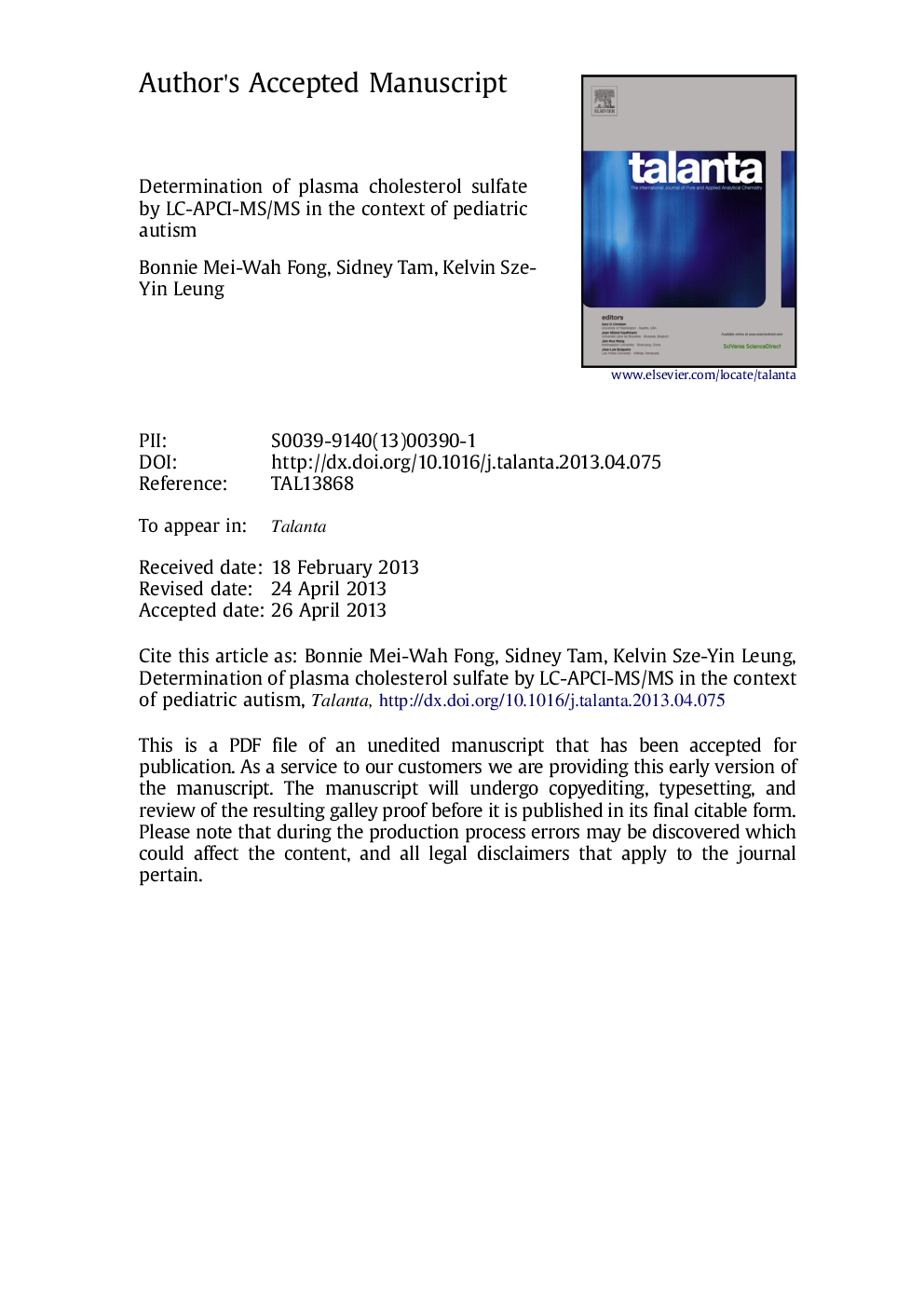| Article ID | Journal | Published Year | Pages | File Type |
|---|---|---|---|---|
| 7681570 | Talanta | 2013 | 25 Pages |
Abstract
Cholesterol sulfate (CS) has various biological functions. Previously, plasma CS was measured primarily as a means to diagnose X-linked ichthyosis; however, a recent hypothesis suggests that CS deficiency might be related to autism. As such, an assay capable of measuring both very high (in the case of X-linked ichthyosis) and very low (in the case of autism) plasma CS levels is required. Here we describe a novel LC-APCI-MS/MS method for the determination of CS in human plasma, and we propose normal CS ranges for children, based on studies of a local population of normal Chinese children between the ages of 2 and 10. In addition, we have used this method to measure plasma CS in autistic children. CS was isolated by solid-phase extraction, and quantified by isotope-dilution LC-APCI-MS/MS in negative ion mode monitoring 465.3>97.1 m/z (CS) and 472.3>97.1 m/z (CS-d7). Mean recovery of the assay ranged from 88.1 to 112.7%; within- and between-run imprecisions have CVs less than 7.2 and 8.1%, respectively. The assay was linear up to at least 100 µmol Lâ1. The reference interval of plasma CS in males (range: 1.16-4.23 µmol Lâ1) was found to be higher than in females (range: 0.86-3.20 µmol Lâ1). Comparison of normal and autistic children showed no statistically significant difference in the plasma CS level. In conclusion, a robust LC-APCI-MS/MS method for plasma CS was developed, and a pediatric reference interval was derived from applying the method to normal and autistic children.
Keywords
Related Topics
Physical Sciences and Engineering
Chemistry
Analytical Chemistry
Authors
Bonnie Mei-Wah Fong, Sidney Tam, Kelvin Sze-Yin Leung,
